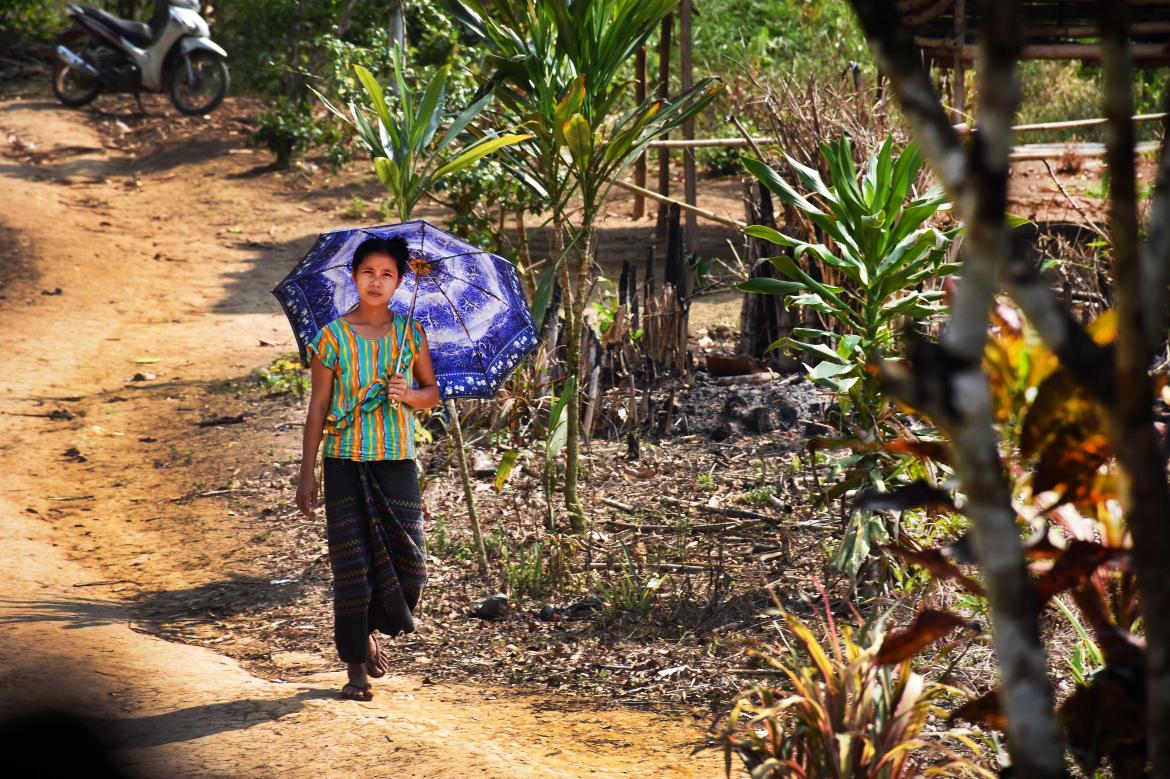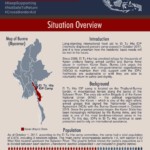By Su Myat Mon / Frontier Myanmar | February 21, 2018
An environmental group has called for greater respect for the rights of indigenous peoples in Tanintharyi Region, saying that land concessions and restrictions on forest use in recent years pose a grave threat to local livelihoods.
In a report released Wednesday, the Conservation Alliance of Tanawthari warned the government’s designation of “Protected Areas” for forest reserves and efforts by international conservation groups risked cutting off local residents from land and resources.
“It looks like ‘house arrest’ for our ethnic people because we are stranded in the middle,” said Saw Chit Win Htoo, a resident of Kyaetuzaw village, at a Yangon press conference organised by the CAT.
Locals say the proposed Tanintharyi and Lenya national parks on the Thai border, first proposed by the government in 2012, threatened to override customary land claims in the region, where their ancestors have worked and resided for upwards of 300 years harvesting areca nut plantations and farming through shifting cultivation.
More than 16,000 people currently live within the designated Tanintharyi and Lenya park areas. Under the 1994 Protection of Wildlife and Conservation of Natural Areas Law, the Protected Areas designation reserves land for the exclusive purpose of conservation.
Along with the existing Tanintharyi Nature Reserve, as well as plans to connect the two parks with a proposed Tanintharyi Nature Corridor, the area designated for conservation would amount to 2.5 million acres — a quarter of Tanintharyi Region’s total land.
Despite being earmarked for conservation, parts of the Lenya national park have been ceded to commercial interests.
The report found that in 1999, villagers displaced by the destruction of Nan Ka Pyaung three years earlier were evicted from a new settlement inside the proposed park to make way for a commercial palm oil plantation operated by Yuzana Company Limited.
More than 80,000 people from Tanintharyi fled civil conflict in the years after the former military junta launched a renewed offensive against the Karen National Union.
In 1992, several locales covered by the national park proposals were designated “black areas”, allowing soldiers to treat all those within the territory as enemy combatants.
Saw Chit Win Htoo, who fled the area soon after to take refuge in Hpa-an, returned after the signing of a bilateral ceasefire between the government and the KNU in 2012.
Around a third of the villagers currently residing in his village of Kyaetuzaw had similarly returned after being displaced to other parts of the country or living as refugees in Thailand for two decades.
Saw Chit Win Htoo said that after they returned, “the forests where we worked at were, unfortunately, already given to business people or regarded as Protected Areas.”
He added that news of the 2012 ceasefire had been greeted enthusiastically by many refugees, but enthusiasm had vanished in the years since as returnees were prevented from returning to traditional livelihoods.
“We want laws to protect the people,” he said.
Returns in other areas have been hampered by the legacy of the long conflict between the KNU and the Tatmadaw. Nan Ka Pyaung village inside the proposed Lenya national park remained off-limits because of landmine contamination, the report said.
The report also cast doubt on the ability of the government’s Protected Areas designation to prevent further biodiversity loss, citing the example of the Hukaung Valley Tiger Reserve in Kachin State.
A 2.5 million acre wildlife reserve there failed to prevent the establishment of a 200,000 acre cassava and sugarcane plantation by Yuzana Co. Ltd in 2004, while communities who tended to agricultural land elsewhere in the reserve were barred from the area.
Naw Eh Tee Wah, an advisor from Tarkapaw Youth Group, said that the encroachment of business interests into the proposed national parks, along with overlapping authority of the government and armed groups in the area, had also left returning refugees in Tanintharyi vulnerable.
“Until the refugees voluntarily come back, their villages and place should be excluded from the proposed national parks,” she said. “The rights of indigenous people should be respected in the protected area too.”
The CAT has called for a moratorium on the expansion of protected areas in Tanintharyi Region and recognition of existing land management and conservation practices by local communities.
This article originally appeared on Frontier Myanmar on February 21, 2018.




![‘The Burma Army Killed Him [Saw O Moo] – At Least the Government or the Army Should Commit to Not Do This Again’: Paul Sein Twa, Executive Director of KESAN](https://www.burmalink.org/wp-content/uploads/2018/05/Saw-O-Moo-commemoration-Paul-Sein-Twa-speaking-2-150x150.jpg)


